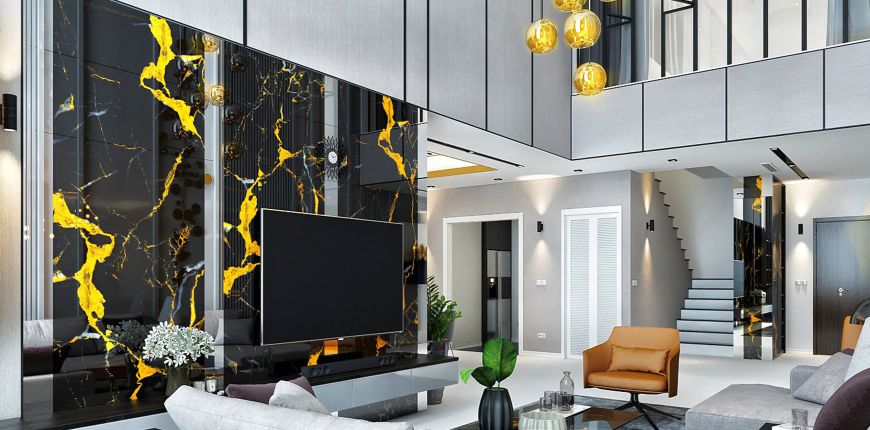Wall cladding is done to protect the home’s outer walls from weather agents effects as well as chemical effects that may add a negative effect on the wall of the building.
Cladding can be performed by giving an extra layer to the walls of any material. It can be a good choice for our interior walls.
1. Factors to be Considered for Wall Cladding
I. Interior Wall Cladding
- a. The cladding should provide a good and smooth finish.
- b. It must be able to resist moisture.
- c. It must be able to withstand stains and conceal them as much as possible.
- d. It must be effortlessly washable.
II. Exterior Wall Cladding
- a. It should be rendered protection to the walls against weather conditions.
- b. It should be aesthetically appealing.
- c. It is used for the thermal insulation of the house.
- d.It also cuts off the sound and helps in making the building soundproof.
- e. It must be able to withstand the fire for a longer time.
2. Types of Wall Cladding
Following are the various types of cladding are as follows:
- 1. Stone Cladding
- 2. Vinyl Cladding
- 3. Brick Cladding
- 4. Fibre Cement Cladding
- 5. Wooden Cladding
- 6. Aluminum Cladding
- 7. Steel Cladding
- 8. Glass Cladding
1. Stone Cladding
Among all the cladding types, the stone cladding is regarded as the most natural and fresh-looking cladding. It can be installed over a surface either made of concrete or steel. These are referred to as lightweight simulated stone products which have a concrete type-base that facilitates its instalment.
Stone cladding is mainly used in the living rooms, indoor gardens and in bathroom walls. The cladding unit is highly durable but is really expensive to install.
2. Vinyl Cladding
Vinyl cladding is a plastic cladding option provided for the exterior walls of the building. It is applied mainly for small apartments, decoration and for weatherproofing. It is used by the majority of homes as it provides adequate protection and also because it is a low-cost option. When compared with wood and aluminium cladding material, this is not considered a good quality option
3. Aluminium Cladding
Aluminium cladding is costly when compared with vinyl cladding units. But aluminium cladding guarantees more durability and longer life than the vinyl cladding. These units are subjected to less maintenance or replacement over the years. Aluminium cladding is used mainly for basement and storage walls of the building. High quality and treated aluminium cladding are used for large commercial buildings and structures.
4. Wooden Cladding
This is one of the highly-rated claddings next to stone cladding. Wooden cladding is stronger than aluminium and vinyl cladding. Wooden cladding brings an attractive finish to the wall when installed. So this is mostly used to improve the aesthetic appearance. Cedar or redwood are mainly used to create wooden cladding units.
Wooden cladding instalment is a very expensive process. Its maintenance is also costly which makes this a costly cladding option.
5. Brick Cladding
Brick cladding provides a lovely decorative look to the walls. The installation of the brick cladding unit is difficult and expensive. But in terms of maintenance brick cladding is less expensive compared with wooden cladding units. If you can't afford wooden cladding, it is recommended to go for brick cladding units.
6. Fibre Cement Cladding
Fibre cement cladding unit is an alternative for people who are looking for strong and beautiful cladding units for the building walls. These units gain high strength and are almost similar to wooden cladding units. These unit are very easy to install and are less expensive. Fibre cement cladding units have zero maintenance.
7. Stainless Steel Cladding
The stainless steel cladding is a very durable cladding solution. It has high resistance to environmental effects. It is manufactured with a minimum of 10% of chromium so that when exposed to oxygen in the atmosphere an oxide of chromium is formed. This oxide forms a passive layer on the surface of the cladding that is a protecting coating towards further corrosion.


